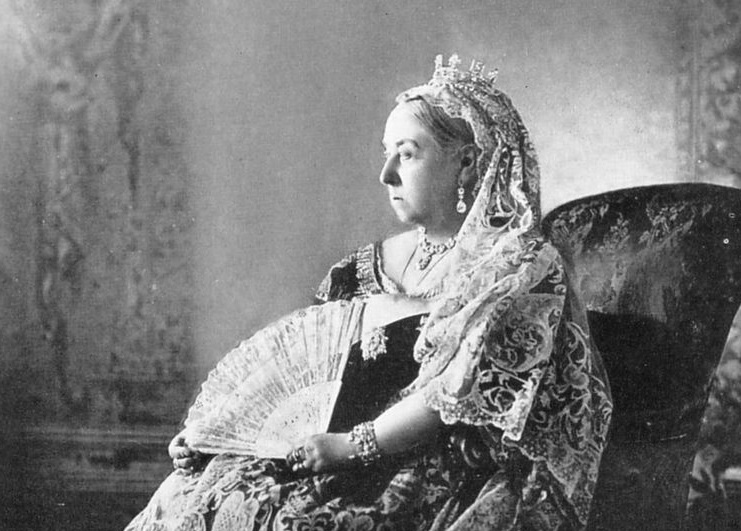
Victoria was the monarch who invented jubilees as we know them. The celebrations of 1887 and 1897 are among the most famous events of royal history and helped shape her legacy. But our modern minds assume there must also have been a silver version, for that is the pattern we are used to. Elizabeth II, the ultimate Jubilee Monarch, began her unprecedented run of anniversary celebrations in 1977 as her reign reached a quarter of a century. But Victoria didn’t have a Silver Jubilee and the reasons why are hotly debated.
For many, there is an obvious choice for the lack of celebratory spirit. The 25th anniversary of Victoria’s reign came on June 20 1862 but the queen was in no mood to party. Just six months earlier, her beloved husband, Prince Albert, had died. Her consort, aged just 42, passed away at Windsor Castle on December 14 1861 from typhoid fever, although modern analysis suggests he may have been suffering from a more long term condition in the years before his death.
Victoria was devastated. Her intense grief saw her retire from public life. By the time the 25th anniversary of her reign arrived, the queen was in seclusion and had no intention of leaving it.
It seems a pretty clear cut reason for the absence of a Silver Jubilee in Victoria’s story. But that assumption ignores the evidence. There was no indication ahead of Albert’s death that Victoria had any intention of celebrating a quarter of a century of her rule.
In fact, the idea of a young queen whose reign was still considered radical by many just because she was a woman, holding public events to mark the 25th anniversary of her accession would have seemed bizarre to many, including Victoria herself.
Jubilees, in their purest terms, represent a period of fifty years. They are first mentioned in the Book of Leviticus where ”the fiftieth year will be a Jubilee for you”. It’s one of the reasons royalty didn’t adopt these celebrations until relatively modern times. It was meant to be a celebration of half a century and very few rulers managed to make that milestone.
Furthermore, Jubilees had no association with temporal rulers until the time of Victoria’s grandfather, King George III. As he entered the fiftieth year of his reign, in October 1809, Britain’s first royal Jubilee had been organised, started by monarchists who feared for the future of the Crown at a time of revolution and rebellion. It had proved hugely successful. But there had been no notion of it being anything other than a celebration of a half century.
Jubilee meant fifty years. In fact, Victoria wrote in her diary several years before Albert’s death of a meeting with a cleric who had just marked his own jubilee. She explained that it marked a passage of half a century. Nowhere, in the version passed down to us, is there an indication she was about to adapt that for her own use.
However, one later remark in her diaries dangles the possibility she had planned a Silver Jubilee. In January 1869, she writes simply that ”There takes place today at Gotha, the celebration of Ernest Coburg’s 25 Jubilee, which however is mixed with many sad sensation.”
Ernest Coburg was her brother in law, the Duke of Saxe-Coburg and Gotha. He had been close to his younger sibling, Albert, and the two men shared many ideas. While there is nothing concrete in writing between the two indicating they were developing the notion of a Silver Jubilee, Albert had been in Coburg in 1860, raising the possibility that they had discussed the concept in private.
However, even if they did, it went no further in England. Later evidence shows that a lot of planning went into Victoria’s Jubilees. She was talking about the celebrations for the fiftieth anniversary of her rule well over a year before they took place. The Diamond festivities of 1897 were also planned several years in advance. The evidence indicates that had Albert and Victoria planned a Silver celebration, they would have started work on it well before his death.
Victoria herself remained sceptical of the idea of a Silver Jubilee. At the end of 1897, soon after the spectacular success of her Diamond celebrations, she wrote in her diaries that she had sent her son-in-law, Prince Christian of Schleswig-Holstein, to represent her at ”the King of Sweden’s 25th Jubilee”. It is dismissed in one sentence and she is far more interested in the prince’s return than the party he had just been to. That scepticism around Silver Jubilees would continue in England after her death. Her grandson, George V, agreed to celebrations for his own quarter century of rule but with many caveats. And several newspapers, particularly in Scotland, refused to acknowledge it as a Jubilee, calling it instead a ”semi-Jubilee”.
By 1977, the concept of a Silver Jubilee was well established. In the early 20th century, the idea of a celebration for a quarter century of rule grew in popularity with Queen Wilhelmina of the Netherlands overseeing a particularly successful silver celebration. By the time The Queen reached her own 25 year anniversary, Silver Jubilees were par for the course.
Victoria would have been far from amused.
‘A History of British Royal Jubilees’ by June Woolerton is published now by Pen and Sword books.

